(Note: This article is Part 1 in a multi-part series, but works fine as a stand-alone article. We will soon publish the other articles. Part II is here).
One of the questions I am consistently asked is:
"Which is the best sounding turntable?"
On the surface it would seem to be a rather silly question, since everyone knows that turntables are not supposed to make any sounds. It is the phono pickup which is designed to take the mechanical motions from a record groove and change them into electrical signals. These signals are then amplified and converted into sound via the amplifier and loudspeakers.
Well, then, it should be obvious that the turntable cannot possibly produce any sound of its own ... or can it? This is the first of a series of articles dealing with turntables, tone arms, phono cartridges, and the integration of these three into a system. These articles will also describe in depth the various good and bad design parameters of the three products and further deal with the advantages and disadvantages of the components individually and as an integrated system.
We will also cover solutions to the problems encountered when setting up and using such a system. These articles will be written as far as is possible in simple, understandable layman's language.
Although it is imperative that the audiophile be made aware of the problems encountered as he attempts to assemble a phono system (turntable, tone arm and pickup), it is even more important he be advised of the solutions to these problems, both at the time of physically assembling the phono system and earlier when making his initial purchase of the components which will comprise the phono system.
In the early days of high fidelity, we audiophiles were confronted with similar problems regarding the assembly and proper matching of components. At that time, it wasn't the phono system that was our dilemma, it was the loudspeaker system. The high fidelity industry was a fledgling industry 20 years ago and very few total speaker systems (completely designed and assembled by the manufacturer) were to be had. The path the audiophile took was to purchase individual drivers (speakers) and build himself a speaker enclosure. The reward for physical labor was good sound and knowledge.
It was not uncommon for the audiophile to build a "new and better" speaker box every week. Needless to say, it became a virtual contest between audiophiles as to whose speaker enclosure was the best. With a variety of shapes and sizes (finish was not a necessary criteria) being exhibited and discussed, it became a joyful delirium to be an "audiophile." Today we have a similar situation in the audiophile market. A delirium, yes! A joy, hardly, unless of course you enjoy spending your dollars for a phono system that promises but doesn't deliver. But let's return to that question we asked above.
Do turntables affect the sound of a phono system? The answer is an absolute YES! The next question is, how? Going back to basics, we know that a phonograph record has grooves which are followed or tracked by the phono pickup. These grooves have a wiggly (how layman can one get?) shape which impart a mechanical motion to the pickup stylus and generating system. This mechanical motion becomes the sound you hear! This is an important key to the solution for understanding!! The phono pickup senses a mechanical motion from the record, and this motion is changed into sound.
The pickup, however, cannot tell whether the mechanical motion it is sensing from the record is actually cut into the record or whether the turntable, for one reason or another, is adding mechanical vibration on the record surface. If the turntable has absolutely no vibration of any sort, then the pickup will play back only the recorded sound. Distortion will be at its lowest under these conditions. If the turntable adds mechanical vibration to the recorded sound of the phonograph record, the pickup will reproduce both. This will result in playback distortion.
Feedback
Distortion can and does exhibit itself in many different ways. You may hear it as obvious distortion which makes listening very unpleasant. You may hear it as an undesirable effect or objectionable resonant coloration.
You may hear it as a subtle effect which may be somewhat annoying but not totally unpleasant. Then again, you may not hear it at all as identified distortion, yet find yourself constantly fatigued from listening to your system. The above variation in effects is governed by the types of mechanical vibration the turntable adds to the recorded music.
The basic causes for turntable mechanical vibration are many but they may be categorized as follows: Design Parameters in the drive system (center drive, rim drive, belt drive, etc.); Design Parameters in the rotor assembly (shaft and bearing, center motor drive, etc.); Design Parameters in platter design (light weight, heavy fly wheel, type of material), and Design Parameters in chassis design (rigid, light, rigid massive, material, etc.). The above vibration sources can be minimized or avoided by the audiophile only through purchasing knowledge. This we hope he will have received after reading these articles.
(Editor's Note: And our equipment profiles!-E.P.) One of the major sources of mechanical vibration to the turntable is feedback, which is of two types basically, mechanical and acoustical. The loudspeaker creates sound by moving air. This air is pumped into the room in the form of low to high level pressures at multiple frequencies and in complex patterns and changing forces. The lower the frequency, the more obvious the mechanical force becomes until you reach a frequency so low that it cannot be heard. Although you cannot hear the loudspeaker at these very low frequencies, these sounds are still capable of creating enough energy to rattle windows and shake walls. If you examine the prior statement carefully, you will understand that the loudspeaker creates acoustical energy through the air with enough force to shake walls. It also creates mechanical energy in the turntable platter and chassis in the same way. This is acoustical feedback.
However, there are times when the acoustical energy will not have enough power to excite the turntable directly and yet still have enough energy to excite the table or shelf on which the turntable is sitting. The acoustical energy is changed into a mechanical motion to the turntable through the shelf or support. This is called mechanical feedback excited by acoustical energy (or the combination of acoustical and mechanical feedback). Mechanical feedback is caused by the loudspeaker box sitting on the floor and vibrating through the floorboards into the wall beams and mechanically coupling the loudspeaker energy to the turntable support and the turntable itself. The balance of this article will deal with the solutions of the above acoustical, acoustical mechanical and mechanical energy feedback problems. The turntable design problems will be explained in the next article since they are interrelated with tone arm function.
To understand the feedback problem, one must first of all be aware that everything surrounding us (pictures on a wall, drinking glasses, furniture, etc.) can be made to vibrate (resonate) if enough energy is applied to the item at some particular sound pitch (frequency). The heavier (more massive the object), the more energy is required to cause it to vibrate. The lighter (less massive the object), the less energy is required to cause it to vibrate. Therefore the picture on a wall will require less energy to cause it to vibrate than the amount of energy required to cause a piece of furniture to vibrate.
When the loudspeaker creates acoustical energy in a room (pulsating air pressure with constantly changing multiple frequencies), it will cause various objects to vibrate, the turntable being one of them. Different parts of a turntable will vibrate with varying amounts of acoustic energy in a room. The three basic parts of a turntable which will vibrate are shown in Fig. 1 and are A, the platter; B, the main board, and C, the base.
A church bell can be rung with a hammer, or it can be made to "hum" by blowing air into it and changing the sound pitch of the air. Similarly, the acoustical energy in a room from a loudspeaker changes pitch and intensity until the turntable platter (if you think of the platter as a bell) starts to hum. This acoustical energy may or may not be audible, yet this humming is a mechanical vibration that is added to the recorded sound. It is distortion that the audiophile can do nothing about.
If your turntable platter is properly designed, the acoustical energy in the room should not excite it, but then the main board on the turntable (8 in Fig. 1) may be excited into vibrating.
This also adds mechanical vibration to the recorded sound and creates distortion. There is nothing the audiophile can do to correct this situation.
If your turntable platter and your main-board are not excited, it is still quite possible that the turntable base can be made to resonate. This will add mechanical vibrations to the recorded sound and will cause distortion. The distortion created by the above conditions are quite different from each other. The distortion can range from frizzy highs to an overall muddy sound. Adding mass to the outer frame will reduce and/or eliminate this latter problem. Example: If a turntable has a flimsy or lightweight wooden base, made from wood 1/2-inch thick, the addition of a dense 2x4-inch wood frame glued as an outside frame (Fig. 2) will add mass and reduce the effects of acoustical energy (more energy is required to move the additional mass). If you were to use lead slabs instead of 2x4-inch wood, the mass would be increased considerably and the problem of the turntable base resonating would be eliminated. It is also important to know that there are turntables sold today that drastically reduce or eliminate any and all of these acoustical energy sensitivities.
==========
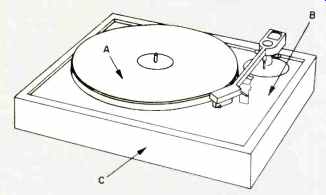
Fig. 1-The three bask parts of the turntable which vibrate are A, the platter;
B, the main board, and C, the base. Each section will vibrate with a different
amount of energy.
THIN FRAME BASE RESONATES EASILY
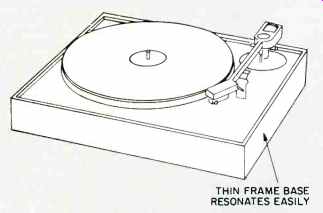
Fig. 2-If the base of the turntable is lightweight or flimsy, it can easily
be made to vibrate and produce distortion ranging from frizzy highs to muddy
lows.
2" x 4" FRAME FOR ADDED MASS
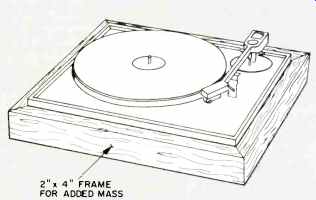
Fig. 3-The addition of a dense, 2x4 inch hardwood frame, glued to the base
of the turntable, will add density to the frame and reduce the effects of acoustical
energy.
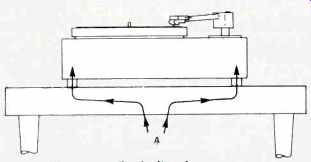
Fig. 4-Feedback disturbance comes through mechanical energy (A) directly coupled
to the turntable through the standing supports, adding mechanical vibration
to the recorded sound and creates distortion.
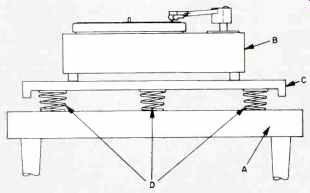
Fig. 5-The best approach to energy decoupling is to use a thick, dense, massive
board (C) and a number of coil springs (D), about three -inches in diameter,
between the platform (A) and the base of the turntable (B) so distortion is
reduced to a minimum.
MECHANICAL ENERGY STOPS HERE
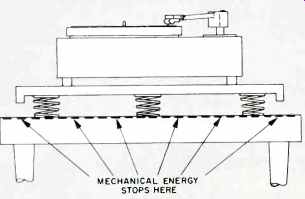
Fig. 6-When properly set up, with the turntable leveled, mechanical energy
stops on the top of the platform at the base of the springs so the turntable
plays back only the recorded signal with no added distortion.
===========
Purchasing Hints
When you buy a turntable make sure that the platter is massive, dense, and rings as little as possible when tapping on the metal with your fingernail (under the rubber mat). Determine that the turntable mainboard is dense and makes as little noise as possible when you tap it with your fingernail. Be sure that the frame is not flimsy, but rather rigid and makes as little noise as possible when tapped with the fingernail. Many of the newer turntables utilize a granite epoxy material which comprises both the turntable mainboard and the frame. These generally are excellent and also tend to absorb the mechanical vibrations from the turntable drive mechanism before it reaches the tone arm.
The main cause of feedback disturbance in a phono system comes from mechanical energy directly coupled to the turntable through its standing supports (Fig. 4). It is a known fact that acoustical energy converted to mechanical energy (through walls or floor) can actually shake the total turntable and add mechanical vibration to the recorded sound and will thus create distortion.
Many attempts have been made to isolate or decouple the turntable mechanically from the room via springs or rubber mounts. Some have been moderately successful, others are a sham. Only in a very few cases have they been totally successful in properly decoupling the turntable from mechanical vibrations, and most have been unsuccessful in removing the previously described acoustic feedback problems.
Recently there have appeared on the market, products which are designed to decouple the turntable from mechanical vibrations. However, the need to design them as a quick solution for a universal application also usually makes them a compromise affair. They do, without a doubt, reduce the feedback problem but not optimally in every case.
One must understand that the frequency at which the energy decoupler resonates must be above the rotational (speed) of the turntable (33 1/3), which is approximately 1/2 cycle per second, and yet lower than the resonant frequency of the tone arm mass and cartridge compliance which is optimally 8-9 cycles per seconds.
The calculated frequency for optimum decoupling of mechanical energy to the turntable is 2-3 cycles per second. To achieve this in a device to be used on all turntables regardless of mass seems like an impossible task, and yet the solution is actually very simple. One of the best approaches to energy decoupling is to use a very dense, thick, massive board and a number of coil springs, about three inches in diameter. How these are arranged is shown in Fig. 5, and the theory behind this is fairly simple. If one spring will support four lbs. at a resonant frequency of 2-3 cycles per second, then use six springs if your turntable and board weigh 24 lbs. As you can see, the mechanical motion transmitted either by acoustical or mechanical energy to the main support A is absorbed by the decoupler springs D, so that the turntable plays back only the recorded signal and does so with minimum distortion.
Properly set up, with the turntable leveled, even jumping on the floor will not make the arm skip. If you were suffering from feedback, the difference in playback sound with this system could be startling! At this time, obtaining such springs is not an easy task since most audiophiles don't have access to a quality spring-making shop. However, we will make available a device that uses such springs in the near future.
I have only scratched the surface of these problems, as you will see in the future articles, one of which will tell you how to set up your high fidelity system without any test equipment and as accurately as an engineer can utilizing thousands of dollars of test equipment. My next article will deal with the design and function of tone arms and a partial discussion on the interaction of the tone arm, turntable, and phono pickup when used as a system.
Also see:
Turntables (Part II) (July 1977)
Turntables (Part IV): Arm/Cartridge Resonance (Oct. 1977)
Dynamic Range Requirements of Phonographic Preamplifiers [Tomlinson Holman, July 1977]
(Audio magazine, June 1977)
= = = =